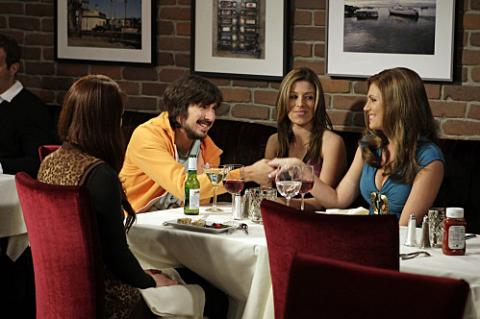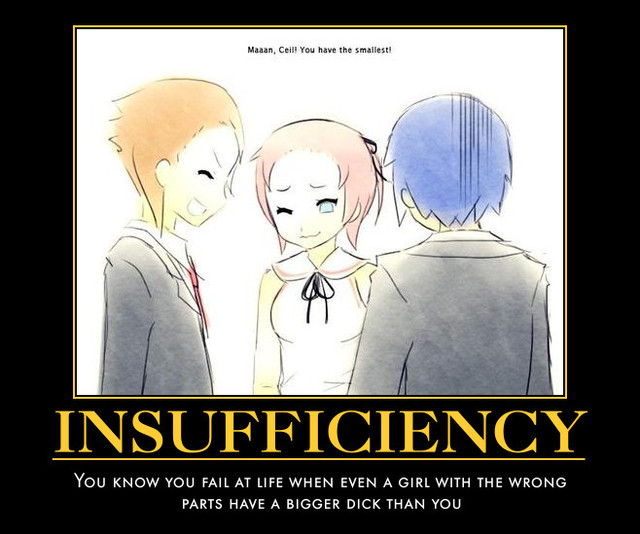Guy Best Friend Quotes Biography
source{google.com.pk}George Burns (January 20, 1896 – March 9, 1996), born Nathan Birnbaum, was an American comedian, actor, and writer. He was one of the few entertainers whose career successfully spanned vaudeville, film, radio, and television. His arched eyebrow and cigar smoke punctuation became familiar trademarks for over three quarters of a century. At the age of 79, Burns' career was resurrected as an amiable, beloved and unusually active old comedian in the 1975 film The Sunshine Boys, for which he won the Academy Award for Best Supporting Actor. He continued to work until shortly before his death, in 1996, at the age of 100. George Burns was born Nathan Birnbaum on January 20, 1896 in New York City, the ninth of 12 children born to Louis "Lippe" and Dorah (née Bluth) Birnbaum, Jewish immigrants who had come to the United States from Romania. Burns was also an active member of the First Roumanian-American congregation. His father was a substitute cantor at the local synagogue but usually worked as a coat presser. During the influenza epidemic of 1903, Lippe Birnbaum contracted the flu and died at the age of 47. Nattie (as he was then called) went to work to help support the family, shining shoes, running errands and selling newspapers. When he landed a job as a syrup maker in a local candy shop at age seven, he was "discovered," as he recalled long We were all about the same age, six and seven, and when we were bored making syrup, we used to practice singing harmony in the basement. One day our letter carrier came down to the basement. His name was Lou Farley. Feingold was his real name, but he changed it to Farley. He wanted the whole world to sing harmony. He came down to the basement once to deliver a letter and heard the four of us kids singing harmony. He liked our style, so we sang a couple more songs for him. Then we looked up at the head of the stairs and saw three or four people listening to us and smiling. In fact, they threw down a couple of pennies. So I said to the kids I was working with, 'no more chocolate syrup. It's show business from now on'. We called ourselves the Pee-Wee Quartet. We started out singing on ferryboats, in saloons, in brothels, and on street corners. We'd put our hats down for donations. Sometimes the customers threw something in the hats. Sometimes they took something out of the hats. Sometimes they took the hats. Burns quit school in the fourth grade to go into show business full-time. Like many performers of his generation, he tried practically anything he could to entertain, including working with a trained seal, trick roller skating, teaching dance, singing, and adagio dancing in small-time vaudeville. During these years, he began smoking cigars and later in his older years was characteristically known as doing shows and puffing on his cigar. He adopted the stage name by which he would be known for the rest of his life. He claimed in a few interviews that the idea of the name originated from the fact that two star major league players (George H. Burns and George J. Burns, unrelated) were playing major league baseball at the time. Both men achieved over 2000 major league hits and hold some major league records. Burns also was reported to have taken the name George from his brother Izzy (who hated his own name so he changed it to "George"), and the Burns from the Burns Brothers Coal Company (he used to steal coal from their truck). He normally partnered with a girl, sometimes in an adagio dance routine, sometimes comic patter. Though he had an apparent flair for comedy, he never quite clicked with any of his partners, until he met a young Irish Catholic lady in 1923. "And all of a sudden," he said famously in later years, "the audience realized I had a talent. They were right. I did have a talent—and I was married to her for 38 years. His first wife was Hannah Siegel (stage name: Hermosa Jose), one of his dance partners. The marriage, never consummated, lasted 26 weeks and happened because her family would not let them go on tour unless they were married. They divorced at the end of the tour. Grace Ethel Cecile Rosalie Allen was born into an Irish Catholic show business family and educated at Star of the Sea Convent School in San Francisco, California in girlhood. She began in vaudeville around 1909, teamed as an Irish-dance act, "The Four Colleens", with her sisters, Bessie, Hazel, and Pearl. She met George Burns and the two immediately launched a new partnership, with Gracie playing the role of the "straight man" and George delivering the punchlines as the comedian. Burns knew something was wrong when the audience ignored his jokes but snickered at Gracie's questions. Burns cannily flipped the act around: After a Hoboken, New Jersey performance in which they tested the new style for the first time, Burns' hunch proved right. Gracie was the better "laugh-getter," especially with the "illogical logic" that formed her responses to Burns' prompting comments or questions. Allen's part was known in vaudeville as a "Dumb Dora" act, named after a very early film of the same name that featured a scatterbrained female protagonist, but her "illogical logic" style was several cuts above the Dumb Dora stereotype developed by American cartoonist Chic Young, as was Burns' understated straight man. The twosome worked the new style tirelessly on the road, building a following, as well as a reputation for being a reliable "disappointment act" (one that could fill in for another act on short notice). Burns and Allen were so consistently dependable that vaudeville bookers elevated them to the more secure "standard act" status, and finally to the vaudevillian's dream: the Palace Theatre in New York. Burns wrote their early scripts, but was rarely credited with being such a brilliant comedy writer. He continued to write the act through vaudeville, films, radio, and, finally, television, first by himself, then with his brother Willie and a team of writers. The entire concept of the Burns and Allen characters, however, was one created and developed by Burns. As the team toured in vaudeville, Burns found himself falling in love with Allen, who was engaged to another performer at the time, Benny Ryan. After several attempts to win her over, he finally succeeded (by accident) after making her cry at a Christmas party. She told a friend that "if George meant enough to her to make her cry she must be in love with him". They were married in Cleveland, Ohio on January 7, 1926, somewhat daring for those times, considering Burns' Jewish and Allen's Irish Catholic upbringing. They adopted their daughter, Sandra, in 1934 and son, Ronnie, in 1935. (For her part, Allen also endeared herself to her in-laws by adopting her mother-in-law's favorite phrase, used whenever the older woman needed to bring her son back down to earth: "Nattie, you're such a schmuck," using a diminutive of his given name. When Burns' mother died, Allen comforted her grief-stricken husband with the same phrase.) In later years Burns admitted that, following an argument over a pricey silver table centerpiece Allen wanted, he had a very brief affair with a Las Vegas showgirl. Stricken by guilt, he phoned one of his best friends, Jack Benny, and told him about the indiscretion. However, Allen overheard the conversation and Burns quietly bought the expensive centerpiece and nothing more was said. Years later, he discovered that Allen had told one of her friends about the episode finishing with "You know, I really wish George would cheat on me again. I could use a new centerpiece." After fighting a long battle with heart disease, Gracie Allen suffered a fatal heart attack in her home on August 27, 1964 at the age of 69. She was entombed in a mausoleum at Forest Lawn Memorial Park Cemetery. In his second book, They Still Love Me in Altoona, Burns wrote that he found it impossible to sleep after her death until he decided to sleep in the bed she used during her illness. He also visited her grave once a month, professing to talk to her about whatever he was doing at the time — including, he said, trying to decide whether he really should accept the Sunshine Boys role Jack Benny had to abandon because of his own failing health. He visited the tomb with Ed Bradley during a 60 Minutes interview on November 6, 1988. Stage to screen Burns and Allen got a start in motion pictures with a series of comic short films in the late 1930s. Their feature credits in the mid- to late-1930s included The Big Broadcast; International House (1933), Six of a Kind (1934), The Big Broadcast of 1936, The Big Broadcast of 1937, A Damsel in Distress (1937) in which they danced step for step with Fred Astaire, and College Swing (1938), in which Bob Hope made one of his early film appearances. Burns and Allen were indirectly responsible for the Bob Hope and Bing Crosby series of "Road" pictures. In 1938, William LeBaron, producer and managing director at Paramount, had a script prepared by Don Hartman and Frank Butler. It was to star Burns and Allen with Bing Crosby, who was then already an established star of radio, recordings and the movies. The story did not seem to fit the comedy team's style, so LeBaron ordered Hartman and Butler to rewrite the script to fit two male co-stars: Hope and Crosby. The script was titled Road to Singapore and it made motion picture history when it was released in 1940.
Guy Best Friend Quotes Tumblr And Sayings For Girls Funny Taglog For Facebook Images Short Pictures

Guy Best Friend Quotes Tumblr And Sayings For Girls Funny Taglog For Facebook Images Short Pictures

Guy Best Friend Quotes Tumblr And Sayings For Girls Funny Taglog For Facebook Images Short Pictures

Guy Best Friend Quotes Tumblr And Sayings For Girls Funny Taglog For Facebook Images Short Pictures

Guy Best Friend Quotes Tumblr And Sayings For Girls Funny Taglog For Facebook Images Short Pictures

Guy Best Friend Quotes Tumblr And Sayings For Girls Funny Taglog For Facebook Images Short Pictures

Guy Best Friend Quotes Tumblr And Sayings For Girls Funny Taglog For Facebook Images Short Pictures

Guy Best Friend Quotes Tumblr And Sayings For Girls Funny Taglog For Facebook Images Short Pictures

Guy Best Friend Quotes Tumblr And Sayings For Girls Funny Taglog For Facebook Images Short Pictures

Guy Best Friend Quotes Tumblr And Sayings For Girls Funny Taglog For Facebook Images Short Pictures

Guy Best Friend Quotes Tumblr And Sayings For Girls Funny Taglog For Facebook Images Short Pictures
No comments:
Post a Comment